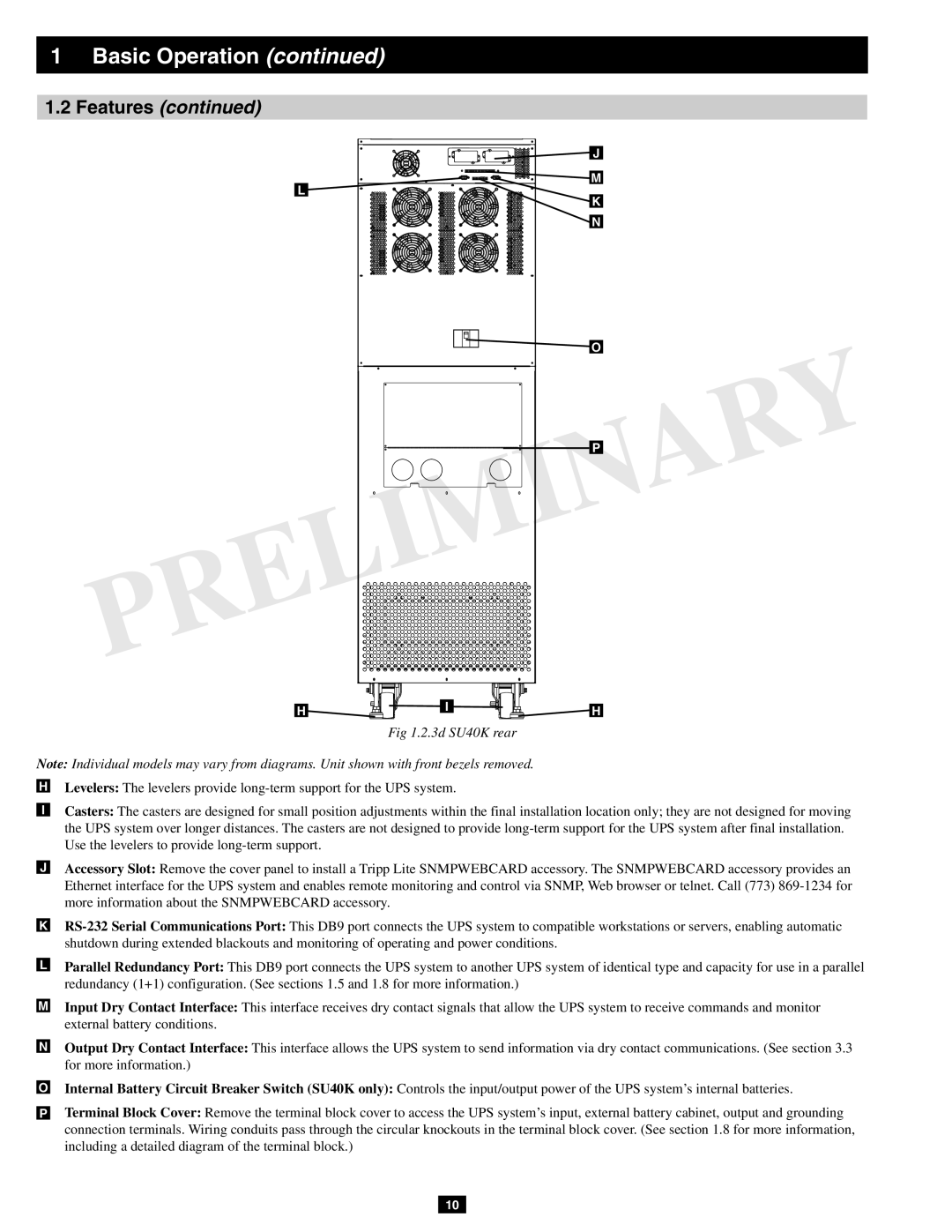
1 Basic Operation (continued)
1.2Features (continued)
Fig 1.2.3d SU40K rear
Note: Individual models may vary from diagrams. Unit shown with front bezels removed.
•Levelers: The levelers provide
•Casters: The casters are designed for small position adjustments within the final installation location only; they are not designed for moving the UPS system over longer distances. The casters are not designed to provide
•Accessory Slot: Remove the cover panel to install a Tripp Lite SNMPWEBCARD accessory. The SNMPWEBCARD accessory provides an Ethernet interface for the UPS system and enables remote monitoring and control via SNMP, Web browser or telnet. Call (773)
•
•Parallel Redundancy Port: This DB9 port connects the UPS system to another UPS system of identical type and capacity for use in a parallel redundancy (1+1) configuration. (See sections 1.5 and 1.8 for more information.)
•Input Dry Contact Interface: This interface receives dry contact signals that allow the UPS system to receive commands and monitor external battery conditions.
•Output Dry Contact Interface: This interface allows the UPS system to send information via dry contact communications. (See section 3.3 for more information.)
•Internal Battery Circuit Breaker Switch (SU40K only): Controls the input/output power of the UPS system’s internal batteries.
•Terminal Block Cover: Remove the terminal block cover to access the UPS system’s input, external battery cabinet, output and grounding connection terminals. Wiring conduits pass through the circular knockouts in the terminal block cover. (See section 1.8 for more information, including a detailed diagram of the terminal block.)
10
